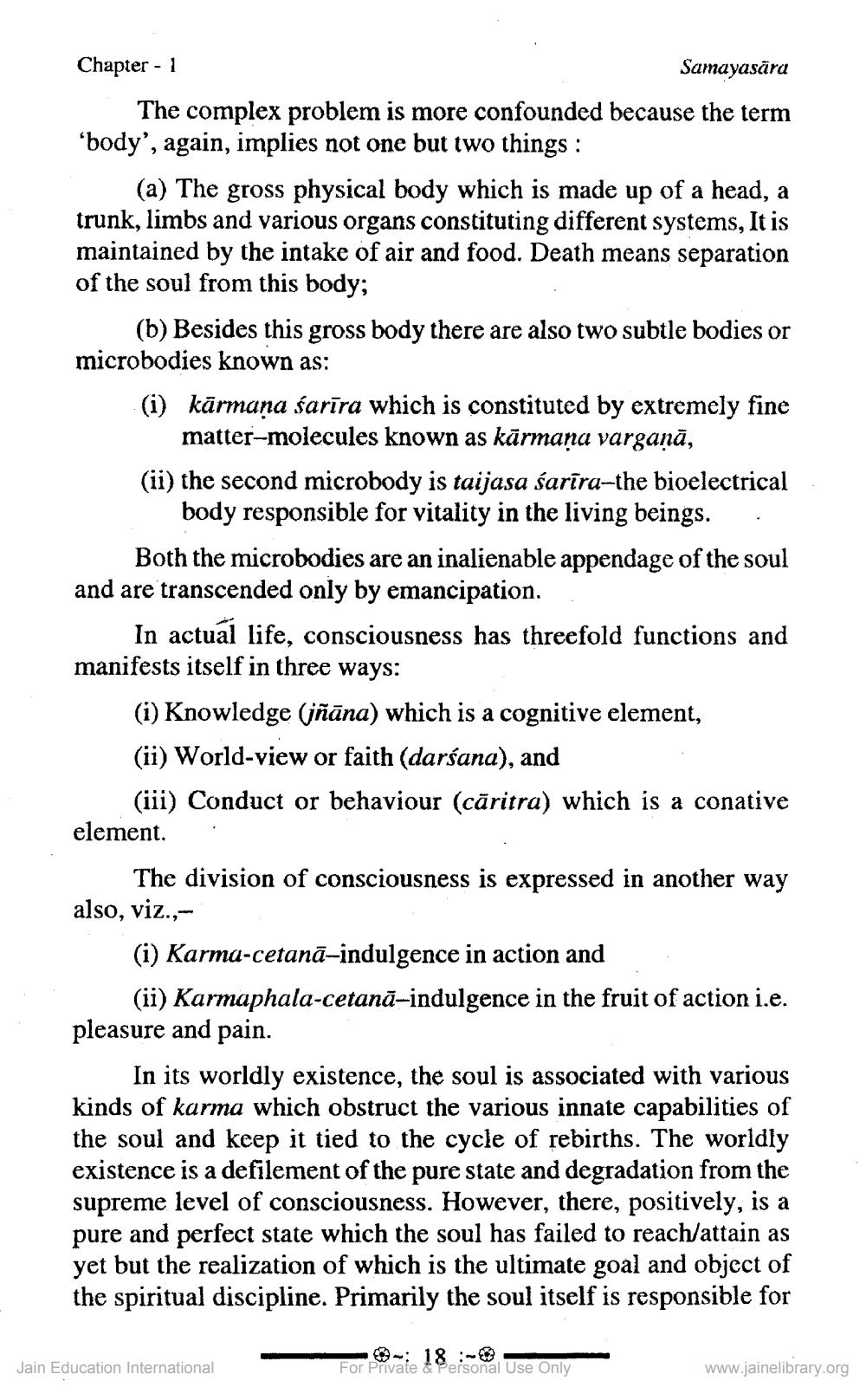________________
Chapter - 1
Samayasära
The complex problem is more confounded because the term 'body', again, implies not one but two things:
(a) The gross physical body which is made up of a head, a trunk, limbs and various organs constituting different systems, It is maintained by the intake of air and food. Death means separation of the soul from this body;
(b) Besides this gross body there are also two subtle bodies or microbodies known as:
(i) kārmaṇa śarīra which is constituted by extremely fine matter-molecules known as kārmaṇa vargaṇā,
(ii) the second microbody is taijasa śarīra-the bioelectrical body responsible for vitality in the living beings.
Both the microbodies are an inalienable appendage of the soul and are transcended only by emancipation.
In actual life, consciousness has threefold functions and manifests itself in three ways:
(i) Knowledge (jñāna) which is a cognitive element,
(ii) World-view or faith (darśana), and
(iii) Conduct or behaviour (căritra) which is a conative element.
The division of consciousness is expressed in another way also, viz.,
(i) Karma-cetanā-indulgence in action and
(ii) Karmaphala-cetana-indulgence in the fruit of action i.e. pleasure and pain.
In its worldly existence, the soul is associated with various kinds of karma which obstruct the various innate capabilities of the soul and keep it tied to the cycle of rebirths. The worldly existence is a defilement of the pure state and degradation from the supreme level of consciousness. However, there, positively, is a pure and perfect state which the soul has failed to reach/attain as yet but the realization of which is the ultimate goal and object of the spiritual discipline. Primarily the soul itself is responsible for
Jain Education International
- 18-0
For Private & Personal Use Only
www.jainelibrary.org




